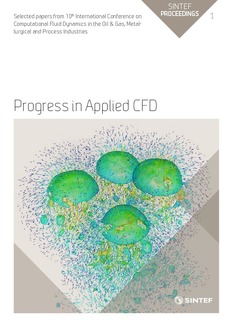Simulation of two-phase viscous oil flow
Chapter, Conference object, Peer reviewed
Published version
Permanent lenke
http://hdl.handle.net/11250/2464812Utgivelsesdato
2015Metadata
Vis full innførselSamlinger
- SINTEF Industri [1533]
- SINTEF Proceedings [402]
Sammendrag
Multiphase flows of heavy oils and other fluids with high apparent viscosity is a particular industrial challenge. Main challenges here is that interfacial waves, atomization at the large scale gas–liquid interface as well as bubble entrainment and separation all are significantly modified by high fluid viscosity. In addition the viscous liquid may behave as laminar while gas and other low viscosity liquids show turbulent behaviour. Accordingly, correct modelling of the turbulence, including correct transitional behaviour between turbulent and laminar flow becomes of great importance. In this paper we have investigated two phase flows of gas at a rather high density and viscous oil. Experiments have been performed at the SINTEF Multiphase Flow Laboratory at Tiller, Trondheim. The experimental section was horizontal, with a pipe inner diameter of 69 mm. Pressure drop - and liquid hold-up time series, as well as video-documentation of the flow, were recorded. The experiments have been analysed and simulated by the Quasi-3D flow model which has been developed in the LedaFlow development project. The results show that flow regimes are well predicted, as well as liquid fractions (hold-up) and pressure drops. Furthermore, some cases have been identified where the Quasi-3D concept is challenged and where the full 3D effects need special attention and modelling. In the paper we describe the experiments in more details, discuss the general challenges on viscous flow modelling, present the special features of our Quasi-3D flow model and compare predictions to the experimental results. Finally we discuss the perspectives of multidimensional modelling as a virtual laboratory for multiphase pipe flows comprising viscous liquids.
